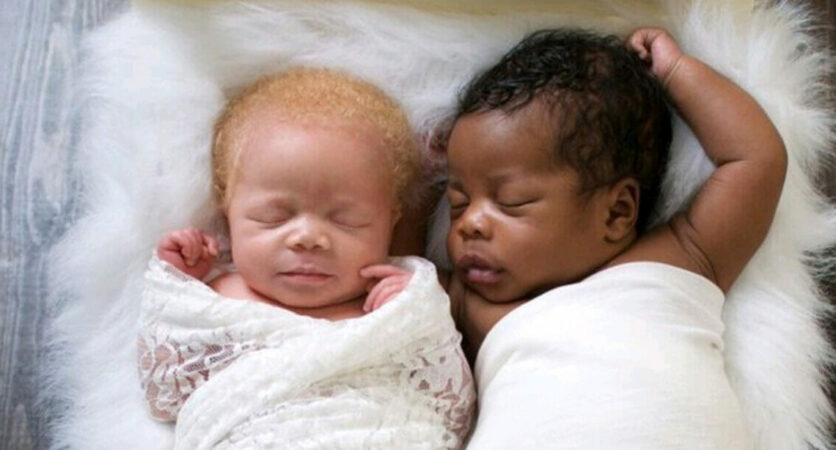A baby’s uniqueness is part of what makes them lovely. It makes no difference what they look like, what they believe, where they came from, or what their parents did in their past.
Then, certain newborns are genuinely exceptional. Such a category includes the unique twins of Nigerian-Canadian photographer Judith Nwokocha.
Kamis, Judith’s son, has dark hair, eyes, and complexion. Kachi, his albino twin sister, is the other half of the pair.
Reports quote Judith as saying, “I recall going for my first scan when they told me ‘you are having a baby,’ and I said no, I’m having two,'” indicating that she knew for sure that she was carrying twins.
It was confirmed by the second ultrasound that we are carrying twins, and I was informed that one or both of the babies might have Down syndrome.
I remember the doctors warning me that Kachi may not make it since she was usually behind, was extremely little, and had stopped developing at seven weeks old.
At first, she didn’t cry, leaving me to wonder: “What’s going to happen? How is she going to be?”
“I couldn’t believe it; at first, I believed they’d given me someone else’s kid.”
Judith, after a period of processing the shock, said, “I was simply delighted she was perfect—both were healthy, and they just made me anxious for nothing.”
Except for the fact that she is from a different race, she might be me.
Kachi is a near-perfect young girl, despite her sensitive skin and poor vision. Judith is aware that she attracts attention as she walks down the street, but she doesn’t let it bother her.
She expressed, “It took me a moment to realize I’m going to be parenting an albino; I was extremely anxious about what others were going to say since having an albino, and a black kid is not normal.”
I was anxious about how she would be received in society and how she would be treated; therefore, I was sad as well.
According to Judith, the twins enjoy a warm and caring connection, like brothers and sisters, and their mother believes that “they haven’t noticed anything unusual.”




